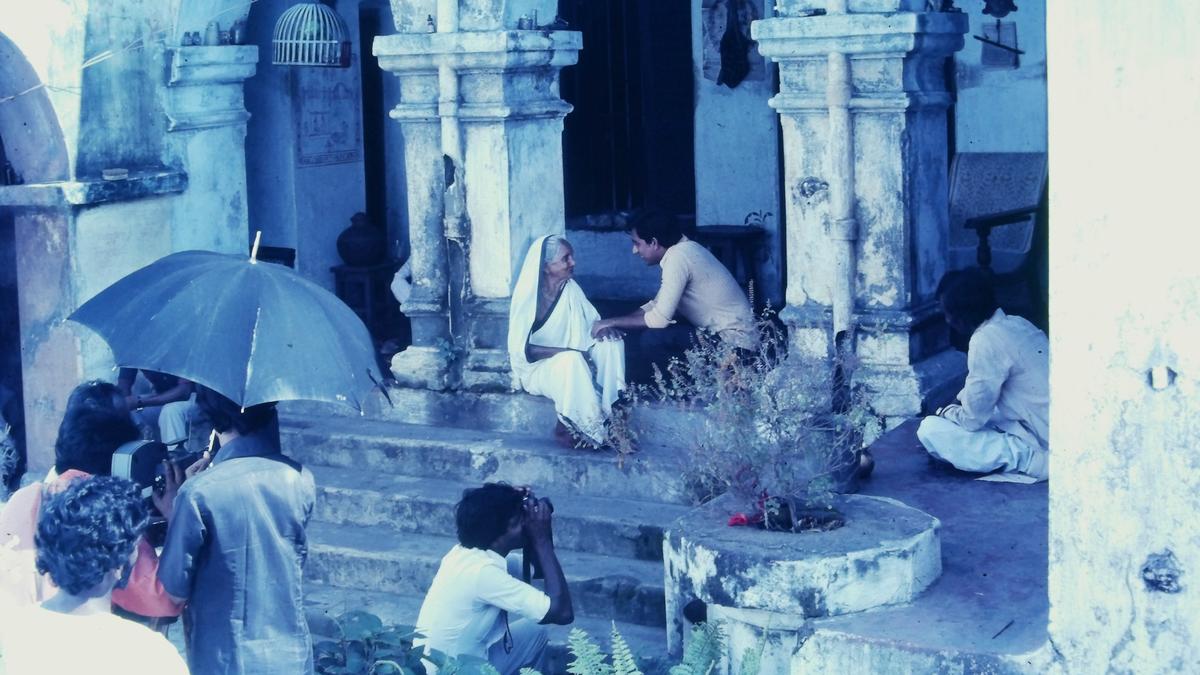
Forgotten Odiya film Maya Miriga is back in circuit
The Hindu
Nirad Mohapatra’s 1984 Odiya classis Maya Miriga revived for global audiences
With Shyam Benegal’s Manthan (1976) making it to the headlines, thanks to the screening of its restored version at the Cannes Film Festival recently, the idea of lost and re-membered stands at the cross-section of visual retelling of the forgotten. The organisation responsible for its restoration is set to hit the headlines again with the screening of celebrated Odia film director Nirad Mohapatra’s classic Maya Miriga (Mirage, 1984) at the Il Cinema Ritrovato festival in Bologna, Italy, from June 22 to 30.
“Even though thefilm was out of circulation for a long time, it kept popping up in conversations over the years. As it happened, of the hundreds of films teetering on the verge of disappearing and clamouring to be restored, circumstances dictated that Maya Miriga make the list,” says Shivendra Singh Dungarpur, Director, Film Heritage Foundation.
The critically acclaimed film would have never seen the light of today, if the director’s son Sandeep Mohapatra had not made earnest efforts to restore it. The work that began in 2021, from one restoration lab to another, came to fruition after three years and is now going to be accessible to connoisseurs of cinema.
Nirad Mohapatra, alumnus of the Film and Television Institute of India, adhered to Italian Neo-Realism and Indian New Wave schools of filmmaking. It is evident in his cinematic choices in Maya Miriga with amateur actors, real locations, lack of melodrama, realistic attires and improvisations. Nirad Mohapatra wrote in his blog in October 2012 that he was not very inclined towards focussing on ‘individuation’, rather he wanted to showcase the overarching narrative and characters who are a part of the story. “One of the reasons why I have not used any close-up in my film is of course to maintain an aesthetic distance but it is also to avoid overemphasis through psychological cutting,” he wrote.
The film stands at the crossroad of transition to modernisation while staying connected to one’s roots. The director subtly raises the questions of moving ahead and looking back. It is Mohapatra’s emotional attachment to the family as against freedom for oneself that provides the mainstay of its conflict, which arises from the social reality of the middle class.
A big joint family living in the semi-urban locality of Puri, Odisha witnesses muted rebellion as the questionof individual ambition and family values bog down the sons and the daughters-in-law. Two couples of the family stand at two extremes. The eldest son (Tuku) takes on the responsibility of looking after the family and educating his siblings while his wife (Prabha), though submissive, constantly questions his decisions but only behind closed doors. Prabha fits the archetype of an abiding and nurturing daughter in law. However, her glimmer in the eyes die down slowly as duty takes over dreams.
The second son Tutu aspires for a better quality of life. Post joining the bureaucracy, the couple decide to relocate to Delhi on the suggestion of his wife. While Tuku’s wife might be termed as the ‘villain’ here, however, as the principles of realism hold, it is time and circumstances that pose to be the real harbingers of change for the good or the worse. Mohapatra uses several symbols to say less and show more.











